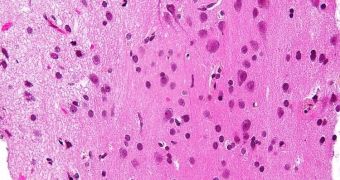A new research has demonstrated for the first time a clear connection between the anatomy and activity patterns of the brain and the presence or absence of altruistic behaviors. Scientists have established that more gray matter in a specific area of the brain equals more altruism in that individual.
The region in question is the junction between the temporal and parietal lobes of the brain. The new study was led by investigators at the University of Zürich, in Switzerland, PsychCentral reports.
Up until now, many researchers believed that altruism was a purely cultural trait that could be cultivated or denied altogether. What this work suggests is that the very structure of the human brain may play a role in determining this behavior.
In order to conduct this investigation, Swiss researchers led by expert Ernst Fehr selected a group of volunteers and asked participants to divide money between them and an anonymous other person, who was presented as being in need.
Altruism was defined in the new study as helping another at one's own expense. The team found that some of the participants – the less altruistic bunch – almost never gave the anonymous person money, whereas others always did. These were defined as being more altruistic.
After the differences between the two groups were established, the investigators turned their attention to the area of the brain that connects the temporal and parietal lobes. Past studies have shown that this region allows people to put themselves in others' shoes, and relate to their thoughts and feelings.
“People who behaved more altruistically also had a higher proportion of gray matter at the junction between the parietal and temporal lobes,” study researcher Yosuke Morishima explains.
“These are exciting results for us. However, one should not jump to the conclusion that altruistic behavior is determined by biological factors alone,” Fehr says. In other words, there are numerous factors that contribute to how people behave, and singling just one of them out would be misleading.
The region of the brain that was the subject of this investigation is located behind the ear. When conducting brain scans of the participants – as the latter were deciding how to split the money – the team found that this area was already activated in selfish people.
In the altruistic group, the area only activated once these individuals reached the end of their altruism, and entered the natural domain of self-centeredness. More altruistic people gave more money until this region of their brain activated.

 14 DAY TRIAL //
14 DAY TRIAL //